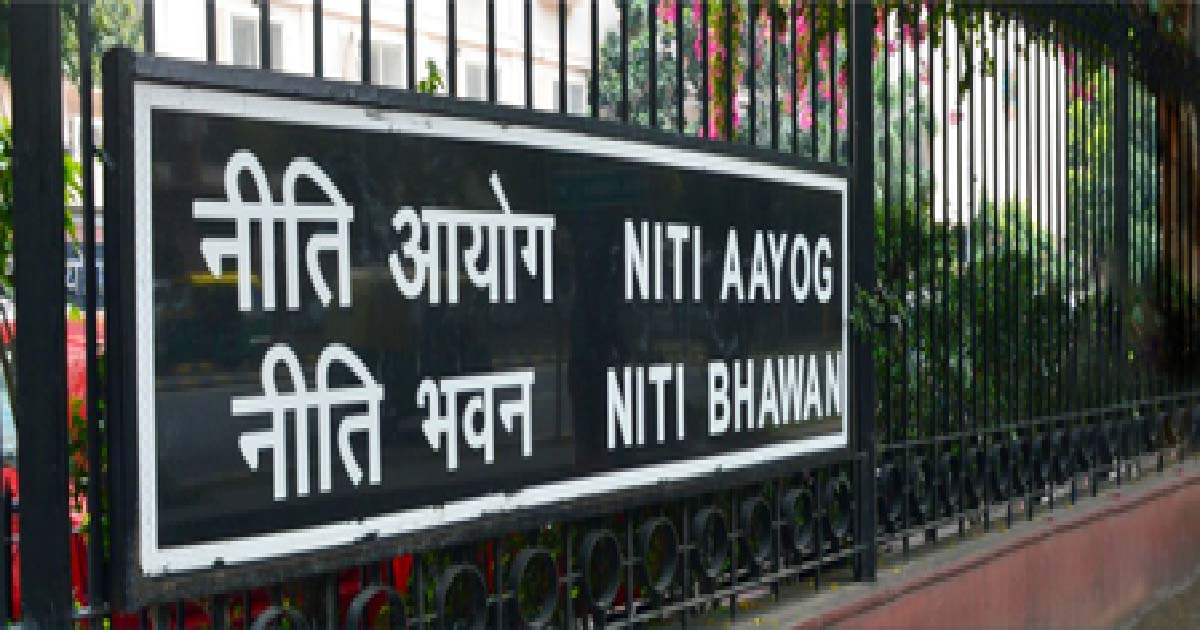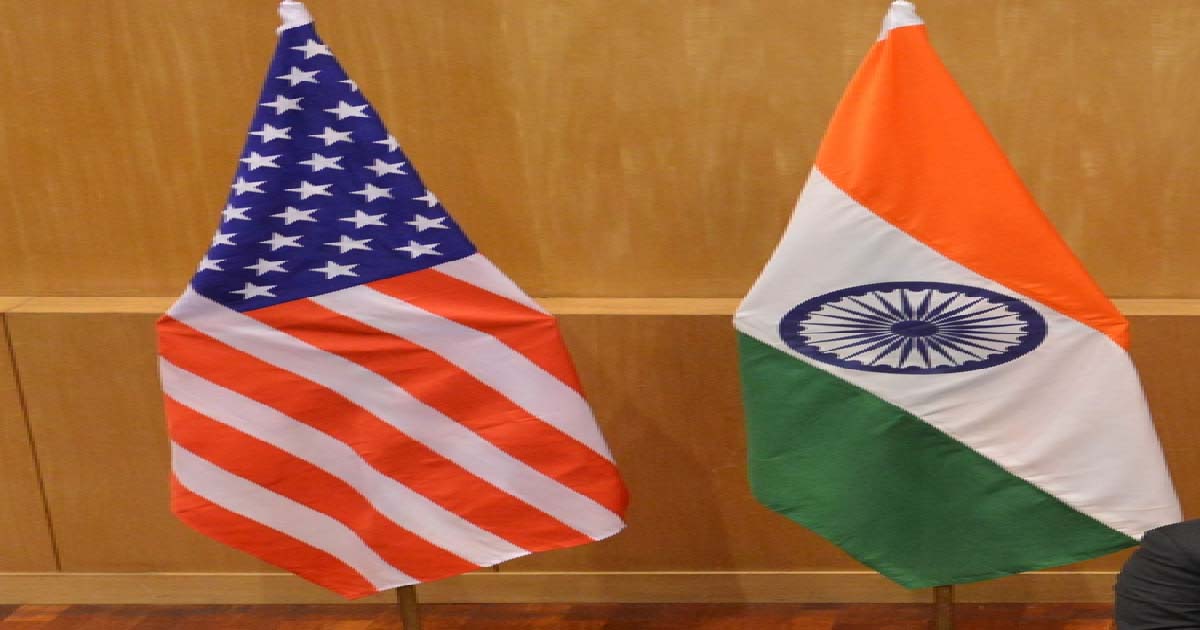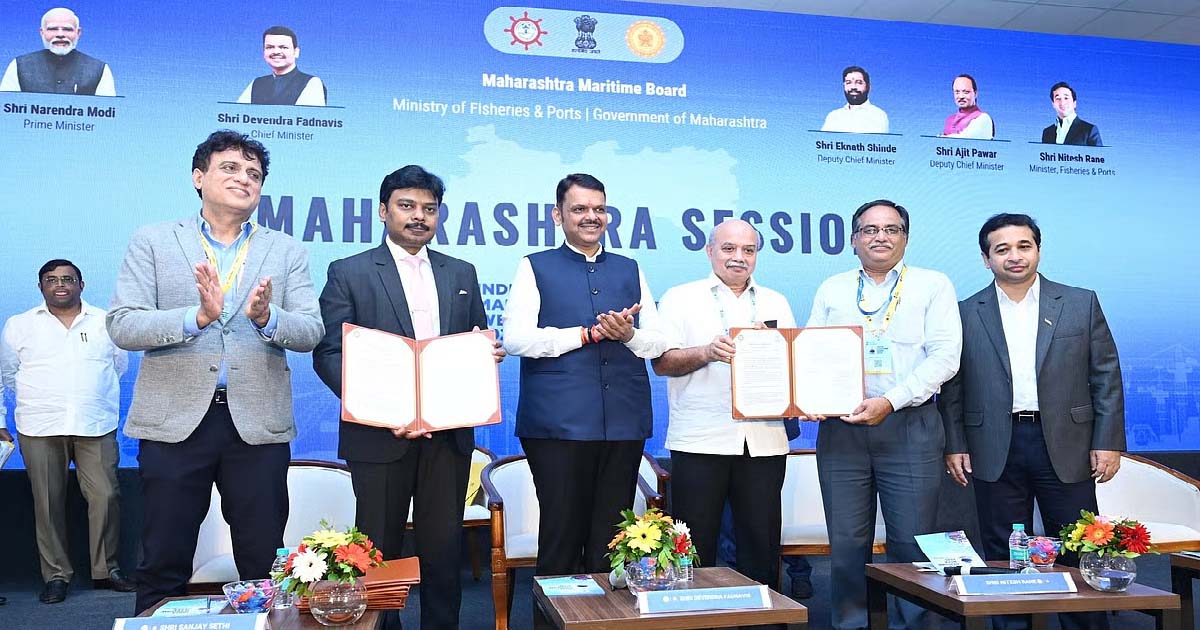Business
Primary market scenario post April 2022

The world has been affected by Covid-19 for over 24 months now. However, capital markets used this opportunity and had a fantastic run during the same whether it be secondary markets or for that matter primary markets. A striking feature of primary market offerings during calendar year 2021 was the fact that the bulk of the offerings, as much as roughly 80 per cent was offer for sale. This OFS was dominated by PE investors who took advantage of the markets and sold their stake at unbelievable valuations. This was also the period when tech platform companies and new age companies hit the market. As usual, the market had its fair share of successes and failures.
The driving force behind the listing gains was the oversubscription witnessed across companies barring a handful. This oversubscription came at a cost- the cost of funding the application and this got built into the listing price. This gave a feeling that the issue did well post listing. In reality, most of these companies have lost sharply from their highs and have given up a large part of their gains. Physical events of companies launching their roadshows had stopped and they had become digital with Zoom webinars being the way. This system had its advantages and disadvantages with time to complete being reduced to just one day. Further it gave an unfair advantage to merchant bankers and promoters as conferences were conducted behind an effective censor board in the form of a moderator and tough questions being simply avoided.
An interesting incident was in the Zomato digital event where the company made its entire presentation in US dollars forgetting the basic fact that in an Indian issue, the currency of subscription is Indian Rupees. Fortunately, no other such event has happened thereafter thankfully.
Let us move to April 2022. The scenario has changed completely. There are new regulations imposed by RBI and SEBI. RBI has introduced a ceiling on the amount of money that can be lent by an NBFC against application at an upper cap of Rs 1 crore. This means every HNI can borrow just one crore each. This would mean in simple terms that the HNI portion which has seen oversubscriptions of 200-600 times would just not happen. The method of controlling this lending would be the PAN card. The second thing would be that this oversubscription came at a cost. The cost of funding. When there is no leveraging, there is no cost of funding. This would have a dramatic impact on the unofficial but rampant grey market. Premiums there would crash and the obnoxious returns made on listing would simply vanish. This would put pressure on subscriptions from other categories as well. The day when an IPO for Rs 1,000 crore garnered subscription across categories of Rs 40,000-60,000 would just stop.
SEBI has split the HNI bucket of 15 per cent into two with the first bucket of 5 per cent for application between 2 lakhs to 10 lakhs. The remaining 10 per cent is for applications which are greater than Rs 10 lakhs. The allotment in these categories in case of oversubscription would be on basis of lots like retail. This implies that allotment would be uniform to all applicants of the base lot size which would be Rs 2 lakhs and 10 lakhs as the case maybe on basis of lottery. In case of undersubscription, allotment would be on normal basis where the applicant would get shares on the basis of his subscription.
The other major change is with respect to anchor allocation and lock-in. Half the shares allotted to anchors would be locked for 30 days while the balance half would be locked in for 90 days. This would make anchor investors seek comfort on the pricing of IPO’s and indirectly seek comfort that the issue is reasonably priced so that they do not go under during the mandatory lock-in period.
Let us look at the HNI bucket with an example. For assumption we take a size of the primary offering which could include fresh issue and offer for sale of Rs 1,000 crore. Fifty per cent of the issue would be for QIB’s, 15 per cent for HNI’s and the balance 35 per cent for retail. Of the 50 per cent for QIB’s, 60 per cent would be for anchors. In this example, Rs 300 crore would be for anchors with Rs 150 crore of shares being locked in for the customary 30 days and balance Rs 150 crore for the new period of 90 days. Any anchor would now take a view that his invested price or issue price should not go below the issue price in 90 days. This would give additional comfort to other investors hopefully.
HNI bucket of 5 per cent for Rs 2 lakhs to 10 lakhs would mean Rs 50 crore. This would require 2,500 applications of Rs 2 lakhs to be subscribed on lots. The larger bucket of 10 per cent or Rs 100 crore would require 1,000 applications of Rs 10 lakhs to be subscribed. When the allotment is capped at this system unlike the earlier proportionate, many large applications would be deterred until and unless on the last day just before closing time there is a feeling that the issue may not get subscribed in the HNI category. Then people would look at the issue and make larger applications than 10 lakhs.
In the new scheme of things there would be two major factors which would see a change. The first is subscription levels where three-digit subscription levels in HNI category would be a thing of the past. Second would be as far as premiums are concerned. They would fall significantly as there is no logical cost of interest which could decide the logical premium. The impact of these two factors combined should put pressure on pricing by merchant bankers and promoters.
As an analyst, a person like me would be very happy that management and merchant bankers would now have to justify valuations rather than take the easy way out of suggesting that there is a 50-60 per cent grey market premium. If you feel the price is high, sell in the grey market.
Interesting times ahead for primary markets which will learn to evolve with these changes as well.
Business
India’s services-led growth becoming more balanced, inclusive: NITI Aayog report

New Delhi, Oct 28: The services-led growth in India’s economy is becoming more regionally balanced as states with lower initial shares in services are catching up with more advanced ones, according to a NITI Aayog report released on Tuesday.
“There is clear evidence that structurally lagging States are beginning to catch up with advanced ones. This emerging pattern of convergence suggests that India’s services-led transformation is gradually becoming more broad-based and spatially inclusive,” the report states.
The services sector has become the cornerstone of India’s economic growth, contributing nearly 55 per cent of national GVA (Gross Value Added) in 2024-25.
To guide policy, the report introduces a quadrant-based framework that classifies 15 major service sub-sectors into four categories-Engines of Growth, Emerging Stars, Mature Giants, and Struggling Segments-to support differentiated strategies across States.
The report recommends prioritising digital infrastructure, logistics, innovation, finance, and skilling to accelerate diversification and competitiveness at the sectoral level.
It also recommends that at the state level there is a need for developing tailored service strategies based on local strengths, improving institutional capacity, integrating services with industrial ecosystems, and scaling up urban and regional service clusters.
Together, these findings offer a forward-looking policy road map for positioning the services sector as a key growth engine across India, reinforcing its central role in the Viksit Bharat @2047 vision.
A companion report titled India’s Services Sector: Insights from Employment Trends and State-Level Dynamics, focusses on employment within the services sector, drawing on data from the NSS (2011-12) and PLFS (2017-18 to 2023-24).
It offers a long-run and multi-dimensional view of India’s services workforce across sub-sectors, gender, regions, education, and occupations. The report goes beyond aggregate trends to reveal the sector’s dual character: modern, high-productivity segments that are globally competitive yet limited in employment intensity, and traditional segments that absorb large numbers of workers but remain predominantly informal and low-paying.
By linking historical and contemporary data, it situates these patterns within a broader framework of structural transformation, offering an integrated understanding of the opportunities and divides that shape India’s services-led employment transition.
Findings show that while services remain the mainstay of India’s employment growth and post-pandemic recovery, challenges persist. Employment generation is uneven across sub-sectors, informality remains widespread, and job quality continues to lag behind output growth. Gender gaps, rural-urban divides, and regional disparities underline the need for an employment strategy that integrates formalisation, inclusion, and productivity enhancement at its core.
To bridge these gaps, the report outlines a four-part policy road map focussing on formalisation and social protection for gig, self-employed, and MSME workers; targeted skilling and digital access to expand opportunities for women and rural youth; investment in emerging and green economy skills; and balanced regional development through service hubs in Tier-2 and Tier-3 cities.
By positioning the services sector as a purposeful driver of productive, high-quality, and inclusive jobs, the report underscores its centrality to India’s employment transition and its pivotal role in realising the vision of ‘Viksit Bharat @2047’.
The reports emphasise the need to deepen digital infrastructure, expand skilled human capital, foster innovation ecosystems, and integrate services across value chains, positioning India as a trusted global leader in digital, professional, and knowledge-based services.
Business
US lawmakers unite to defend bilateral ties with India through letters and resolutions

Washington, Oct 28: Both Republican and Democratic lawmakers have joined hands to support the India-US relationship, months after the Trump administration announced a series of policies targeting Indian interests.
At least six bipartisan letters and resolutions have been drafted over the past 10 days defending the interests of the Indian American community, reaffirming support for the India–US partnership, and pressing the administration for accountability over its recent actions targeting New Delhi.
Last week, a group of House members expressed concern that an event at Rutgers University on Monday could “fuel further prejudice” against Hindus at a time when Hindu temples have been targets of violence.
The co-signers of the letter were Democrats Sanford Bishop from Georgia, Shri Thanedar from Illinois, and Suhas Subramanyam from Virginia, and Republican Rich McCormick, also from Georgia.
Two days earlier, another bipartisan group of six House Representatives wrote to US President Donald Trump and Commerce Secretary Howard Lutnick, expressing concerns over the H-1B proclamation.
“We are concerned that the recent proclamation related to H-1B visa petitions will create significant challenges for US employers and overall weaken our competitiveness,” the letter stated.
The group again included Democrat Suhas Subramanyam along with Republican Congressmen Jay Obernolte and Don Bacon, among others.
On October 17, four US lawmakers wrote to President Donald Trump, urging him to attend the Quad Leaders’ Summit in India and other meetings in Asia.
The same day, a bipartisan resolution was introduced in the House of Representatives to recognise the “contributions made to the United States by the Indian American diaspora” and condemn recent acts of racism against Indian Americans.
The resolution also termed the India-US relationship as “one of the most important democratic partnerships in the world”.
It was a sharp departure from just days earlier, when 19 House members, all Democrats with no Republican support, wrote to President Donald Trump on October 8, urging him to “reset and repair” the India-US “critical partnership”.
Leaders from both Democratic and Republican parties have faced criticism for mostly remaining silent as senior officials of the Trump administration, like Trade Advisor Peter Navarro and Commerce Secretary Howard Lutnick, repeatedly targeted India over its purchase of Russian oil and trade imbalance.
In August, the Trump administration imposed 50 per cent tariffs on New Delhi, which included a 25 per cent levy for importing Russian oil.
Then, in September, President Donald Trump signed a proclamation on H-1B visas, imposing a $100,000 application fee to restrict the programme. Over 70 per cent of the approved H-1B applications in 2024 went to Indian nationals.
While a handful of Democrats opposed the administration’s stance publicly, Republican lawmakers, until recently, decided to keep quiet.
In early October, Democratic Representative Ami Bera, a leading advocate of the US-India relationship, told Media that some Republican lawmakers have remained silent out of fear of the president.
“I think they’re certainly afraid to take on President Trump directly,” he said.
In recent weeks, ties have stabilised, and negotiators have resumed talks to finalise the first phase of a trade agreement.
Last week, President Donald Trump held a special Diwali event at the White House where he termed Prime Minister Narendra Modi “a great person” and said he loves “the people of India.”
Bera added that more members should come out to support the relationship.
“Instead of making this about President Trump, let’s make it about the US-India relationship. Let’s make it about what we think as members of Congress – Democrats and Republicans. I don’t want the India-US relationship to be a Democratic thing or a Republican thing. It should be an American thing,” he told Media.
Business
Maharashtra Signs ₹56,000 Crore MoUs To Boost Maritime Trade & Industry

Mumbai: Chief Minister Devendra Fadnavis expressed confidence that Maharashtra will lead the country in the fields of maritime trade and industry through the Memorandums of Understanding (MoUs) signed today. A total of 15 MoUs were signed in the presence of the Chief Minister during India Maritime Week 2025, held at NESCO, Goregaon.
Also present were Fisheries and Ports Minister Nitesh Rane, Additional Chief Secretary (Ports) Sanjay Sethi, CEO of Maharashtra Maritime Board P. Pradeep, and representatives of the companies involved in the agreements.
Chief Minister Fadnavis said that several MoUs have been signed with different companies to develop the maritime ecosystem, involving investments worth approximately ₹56,000 crore. These agreements will help position Maharashtra at the forefront of maritime trade and development. Facilities related to ports, transport, industry, and commerce will be upgraded to global standards.
“Water transport is very important for Mumbai. The Ro-Ro ferry service has received an excellent response from citizens. Now, a water taxi service between Gateway of India and Navi Mumbai Airport will be launched, which will significantly reduce travel time. Additionally, a fleet of electric vessels (EV vessels) will be introduced to ensure clean and eco-friendly water transport.”
The state is developing water sports centers, shipbuilding industries, and blue economy projects. A major port is being established at Vadhavan, which will make Maharashtra a leader in the country’s maritime sector. The Vadhavan Port will be connected by road to key cities across the state, ensuring its benefits reach all regions of Maharashtra, the Chief Minister said.
Maharashtra Set to Become the Center of India’s Maritime Growth
— Minister of Fisheries and Ports Nitesh Rane
Minister Nitesh Rane said that this is a proud moment for Maharashtra. Due to the visionary leadership of Chief Minister Devendra Fadnavis, vast opportunities for growth have been created in the maritime sector. Maharashtra is emerging as a frontrunner in shipbuilding policy, passenger water transport, and marine tourism.
He added that Maharashtra will soon become the epicenter of the nation’s maritime development, and the MoUs signed today will give Maharashtra’s maritime industry global strength. A new chapter of investment in port development, shipbuilding, ship repair, and maritime transport has begun, he said.
Adani Ports and Special Economic Zone Ltd. — Development of Dighi Port and related infrastructure as a mega port; Investment: ₹42,500 crore.
JSW Infrastructure Ltd. — Expansion of existing Jaigad and Dharamtar ports; Investment: ₹3,709 crore.
Chowgule & Company Pvt. Ltd. — Shipbuilding, ship repair, rig repair, offshore and energy project development; Investment: ₹5,000 crore.
Synergy Shipbuilders & Dock Works Ltd. — Shipbuilding, ship repair, and ship recycling yard; Investment: ₹1,000 crore.
Goa Shipyard Ltd. — Shipbuilding, ship repair, and ship recycling yard; Investment: ₹2,000 crore.
Indian Institute of Technology (IIT) Bombay — Establishment of a Centre of Excellence for research and development in ship design and construction.
IIT Bombay — Development of training facilities in marine engineering and infrastructure.
IIT Bombay — Capacity building and skill development programs for Maharashtra Maritime Board employees.
Knowledge Marine & Engineering Works Ltd. — Shipbuilding and repair yard project; Investment: ₹250 crore.
TSA Enterprises Pvt. Ltd. — Development of Container Freight Station (CFS), shipyard, and flotel project at Vadhavan Port; Investment: ₹500 crore.
Candela Technology AB (Sweden) — Establishment of a shipyard for the construction of passenger water transport vessels.
Abu Dhabi Ports Group (UAE) — Agreement to enhance maritime cooperation between Maharashtra and the UAE.
Atal Turnkey Projects (Netherlands) — Agreement for maritime cooperation between Maharashtra and the Netherlands; Investment: ₹1,000 crore.
Echandia Marine AB — Establishment of a marine battery energy storage system assembly and manufacturing facility for tugboats; Investment: ₹10 crore.
Mumbai Port Authority — MoU for mutual cooperation to strengthen passenger water transport within the Mumbai Metropolitan Region (MMR).
Total Expected Investment: ₹55,969 crore
These MoUs will bring large-scale investment into port development, shipbuilding, marine research, and technical training in Maharashtra. Major projects such as Dighi Port and Vadhavan Port will enhance the state’s maritime trade capacity, while collaboration with IIT Bombay will promote innovation and skill development.
This initiative will create thousands of employment opportunities, attract new industries, and accelerate progress toward the Developed India 2047 vision.
Both central and state governments emphasized that these MoUs mark a significant step forward in strengthening India’s maritime future through joint efforts.
-

 Crime3 years ago
Crime3 years agoClass 10 student jumps to death in Jaipur
-

 Maharashtra1 year ago
Maharashtra1 year agoMumbai Local Train Update: Central Railway’s New Timetable Comes Into Effect; Check Full List Of Revised Timings & Stations
-

 Maharashtra1 year ago
Maharashtra1 year agoMumbai To Go Toll-Free Tonight! Maharashtra Govt Announces Complete Toll Waiver For Light Motor Vehicles At All 5 Entry Points Of City
-

 Maharashtra1 year ago
Maharashtra1 year agoFalse photo of Imtiaz Jaleel’s rally, exposing the fooling conspiracy
-

 National News1 year ago
National News1 year agoMinistry of Railways rolls out Special Drive 4.0 with focus on digitisation, cleanliness, inclusiveness and grievance redressal
-

 Maharashtra12 months ago
Maharashtra12 months agoMaharashtra Elections 2024: Mumbai Metro & BEST Services Extended Till Midnight On Voting Day
-

 National News1 year ago
National News1 year agoJ&K: 4 Jawans Killed, 28 Injured After Bus Carrying BSF Personnel For Poll Duty Falls Into Gorge In Budgam; Terrifying Visuals Surface
-

 Crime1 year ago
Crime1 year agoBaba Siddique Murder: Mumbai Police Unable To Get Lawrence Bishnoi Custody Due To Home Ministry Order, Says Report












